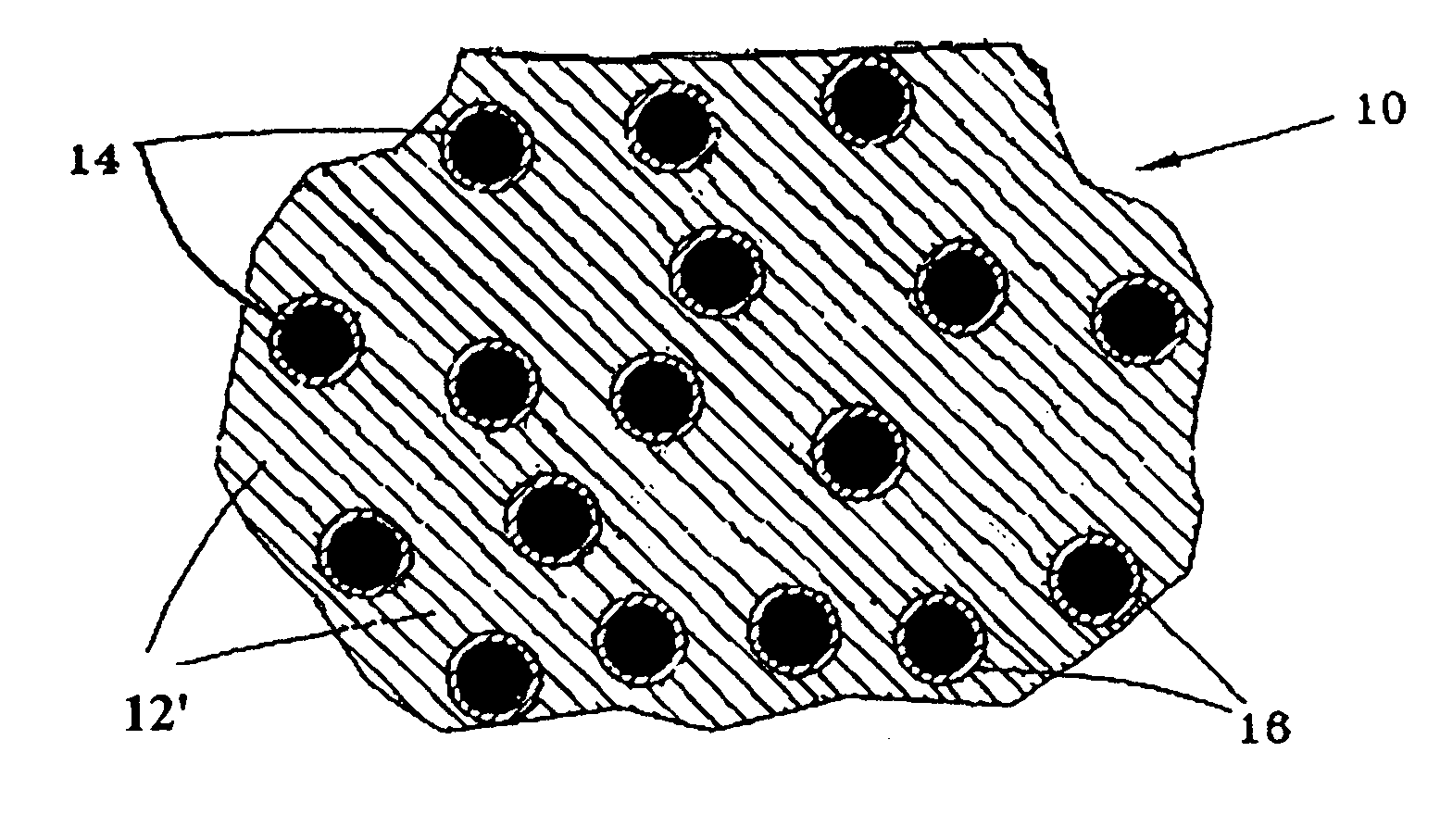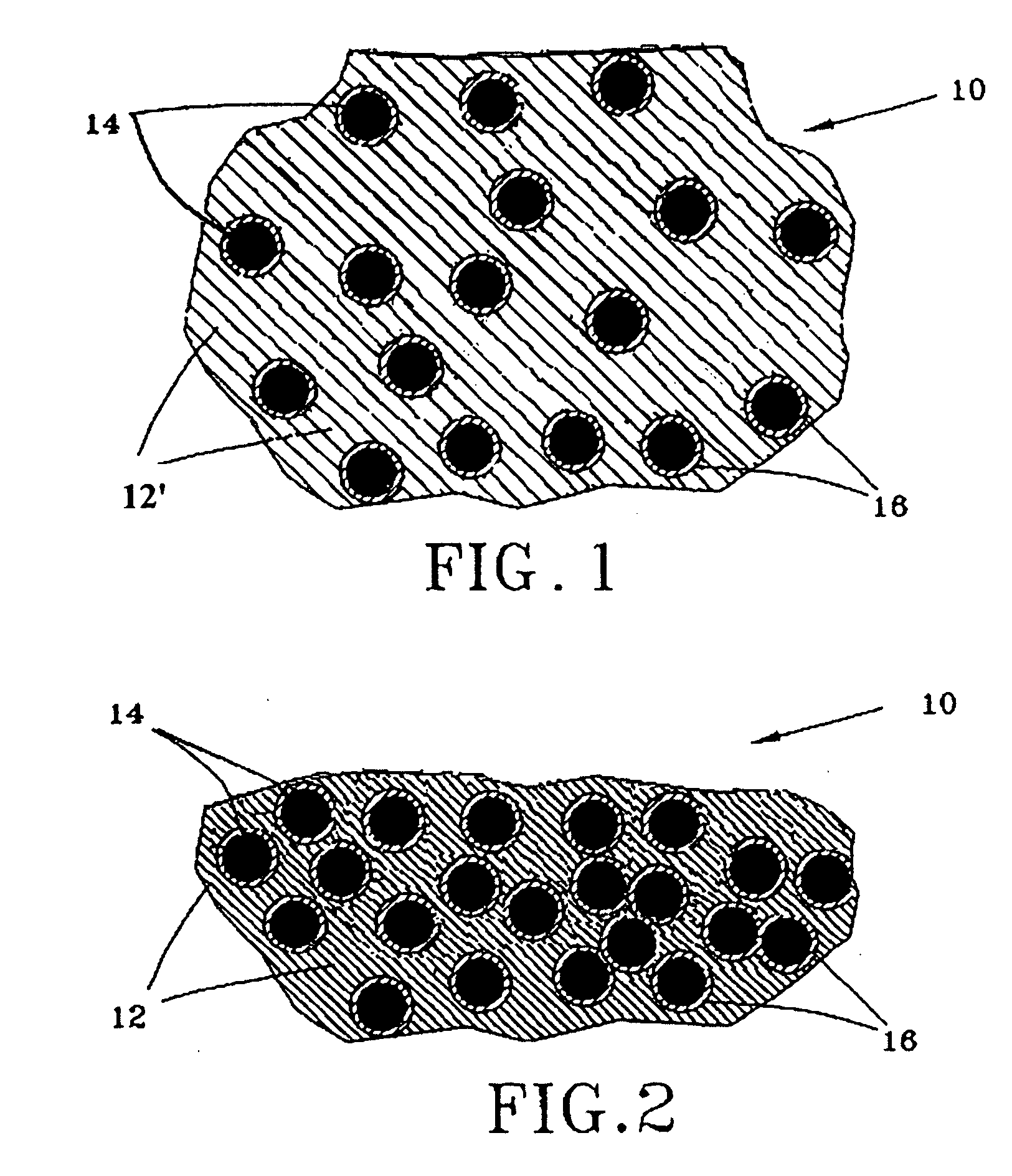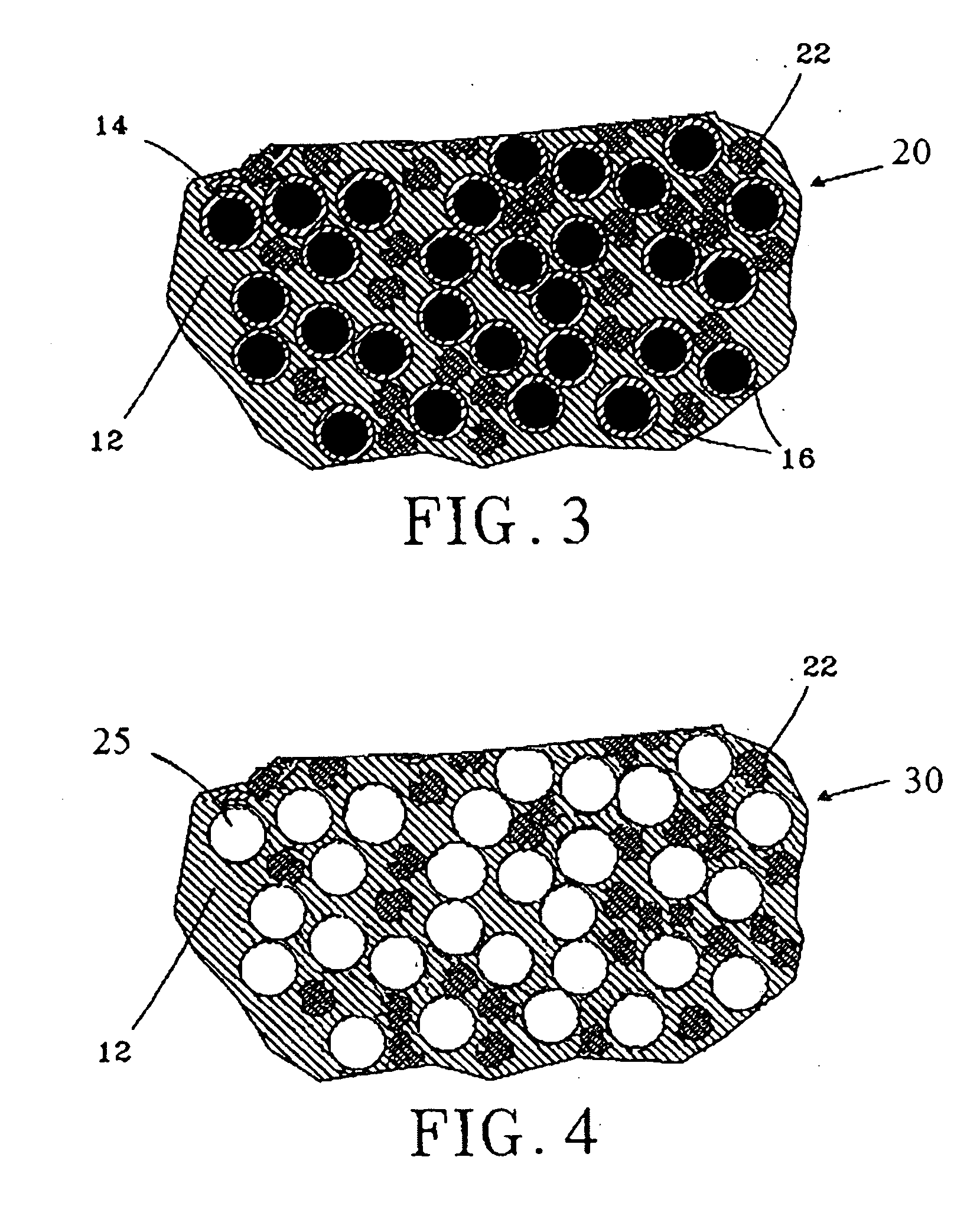Thermal transient suppression material and method of production
a technology of thermal transient suppression and material, applied in the direction of energy input, semiconductor/solid-state device details, transportation and packaging, etc., can solve the problems of overheating and device failure, phase change materials have disadvantages for electronic applications, and expensive sealed containment is required, so as to reduce the volume of the matrix material, reduce the viscosity, and improve the thermal absorption characteristics of the ttsm
- Summary
- Abstract
- Description
- Claims
- Application Information
AI Technical Summary
Benefits of technology
Problems solved by technology
Method used
Image
Examples
example 1
Effect of the Addition of OS-20 on Pour Thickness of TTSM
[0032] Experiments were performed by mixing different amounts of OS-20 to different batches of the matrix material (tough gel, TG) to reduce the viscosity of the matrix material. After the mixing was complete, the liquid gels were poured onto a substrate to solidify, and cure. The curing process took up to 4 to 6 hours if more OS-20 was added. At the end of the curing process, the thickness of the cured matrix material was measured. The measurement results are presented in FIG. 5. As shown, the more OS-20 was added to the matrix material, the thinner the cured final material was formed. Up to 70 weight % of OS-20 could be added to maintain an acceptable pour thickness of about 0.05 mm (0.002 in) or less.
example 2
Effect of Thickness of TTSM on Thermal Transient Performance
[0033] As shown in FIG. 6, TTSM prepared according to the process of the present invention was tested with two levels of power devices: low power (Steady State 12 W, Transient 36 W) and high power (Steady State 20 W and Transient 60 W). The results indicate that with the lower power, the thickness of TTSM had very little effect on the time required for the temperature of a die junction to change from 150° C. to 200° C. A thickness of 0.002 inch or 0.05 mm appeared to be optimal. With the high power, it appeared that the time required for the temperature of a die junction to change from 150° C. to 200° C. depended on the thickness of TTSM. The thicker the TTSM, the more the heat energy was absorbed, resulting in the longer time for the temperature to change to 200° C.
example 3
Thermal Properties of Two Formulations of TTSM
[0034] Two formulations of TTSM-1 and TTSM-2 were prepared according to the method of the present invention. TTSM-1 contained 6 weight % of the matrix material (TG), 13 weight % of boron nitride particles, and 81% of coated solder particles (6TG / 13BN / 81 Solder). TTSM-1 had solder particles having light coating (see Table 1). TTSM-2 had 4 weight % of the matrix material, 7 weight % of boron nitride particles, and 89% of coated solder particles (4TG / 7BN / 89 Solder). TTSM-2 had solder particles having heavy coating (see Table 1). TTSM-1 and TTSM-2 were tested with two power levels, a high power and a low power. The transient performance of TTSM-1 and TTSM-2 was determined and the results are reported in Table 2. The transient performance numbers represent the time required in seconds for the die junction temperature to rise from 150° C. to 200° C. The numbers in parentheses are the ratio of the observed times with TTSM material / without TTSM...
PUM
| Property | Measurement | Unit |
|---|---|---|
| viscosity | aaaaa | aaaaa |
| weight % | aaaaa | aaaaa |
| viscosity | aaaaa | aaaaa |
Abstract
Description
Claims
Application Information
 Login to View More
Login to View More - R&D
- Intellectual Property
- Life Sciences
- Materials
- Tech Scout
- Unparalleled Data Quality
- Higher Quality Content
- 60% Fewer Hallucinations
Browse by: Latest US Patents, China's latest patents, Technical Efficacy Thesaurus, Application Domain, Technology Topic, Popular Technical Reports.
© 2025 PatSnap. All rights reserved.Legal|Privacy policy|Modern Slavery Act Transparency Statement|Sitemap|About US| Contact US: help@patsnap.com



